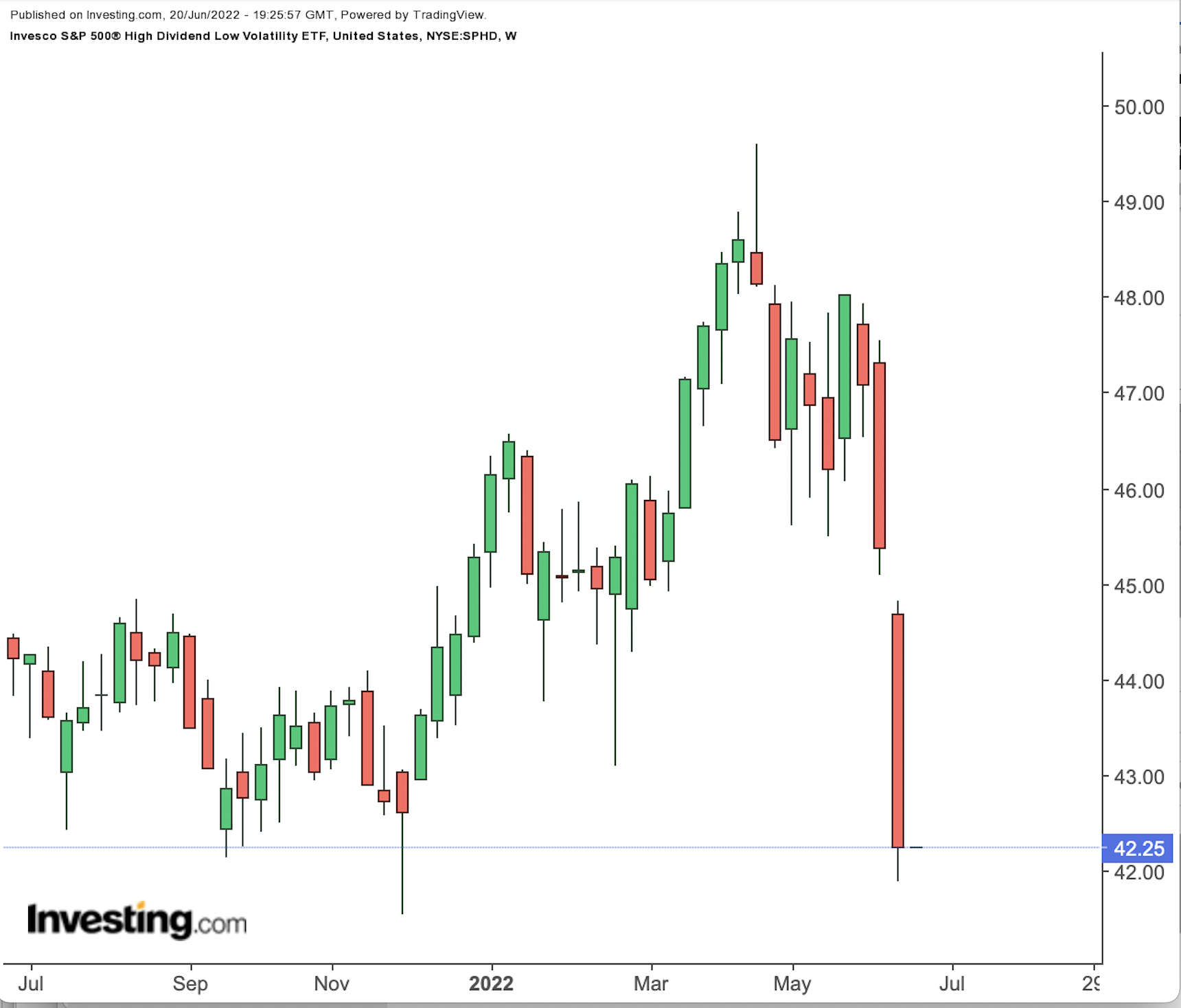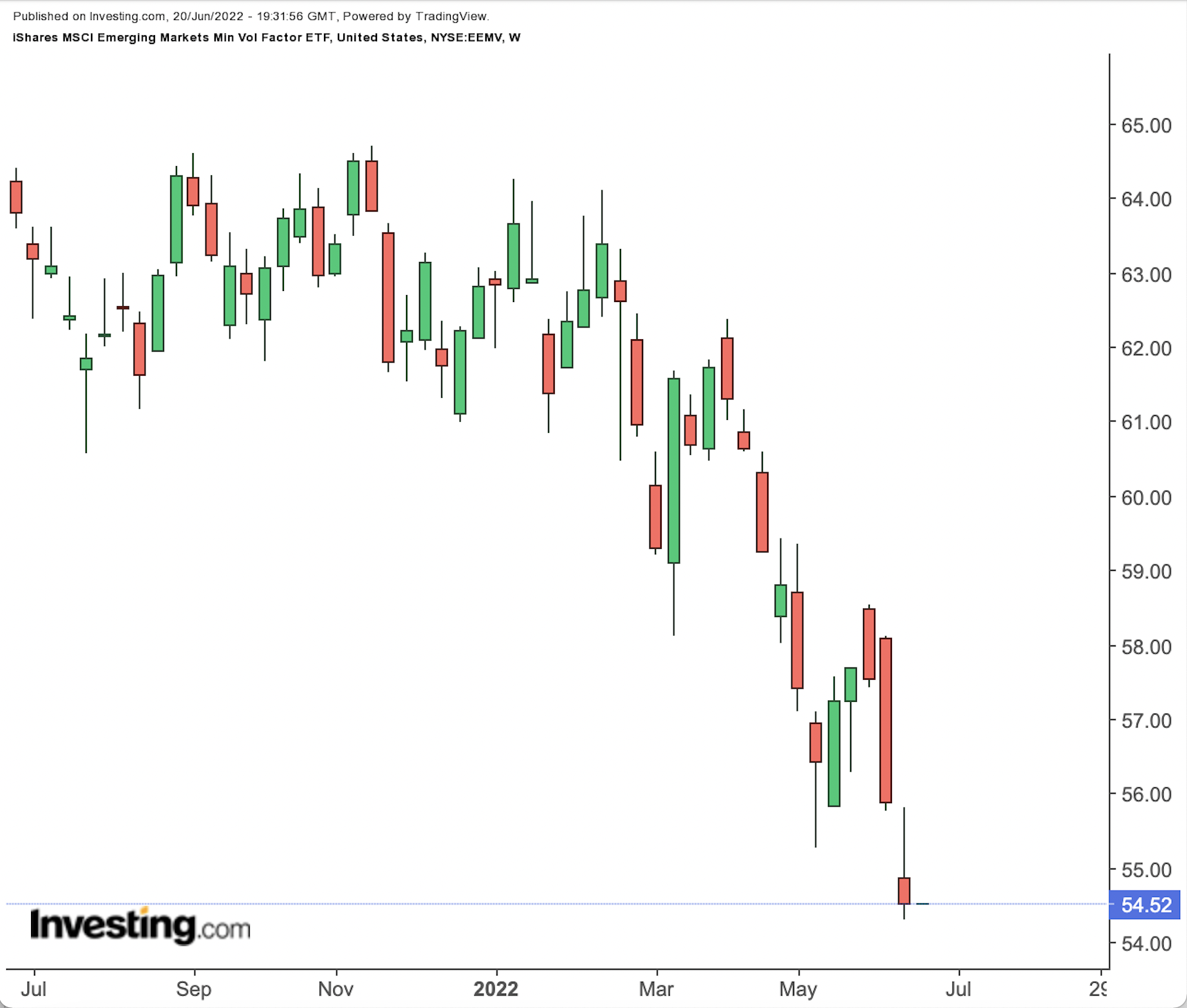Volatility continues to grip Wall Street amidst growing concerns over an economic recession. The CBOE Volatility Index, also known as the “fear index,” is hovering above 31, up more than 80% since January. Analysts anticipate volatility to remain high as markets debate what may be next after the Federal Reserve’s 0.75% rate increase June 15.
Last week, the Dow Jones and S&P 500 fell into bear market territory as they declined from the record highs of early January. Investors in the NASDAQ Composite have been grappling with the bear market since March.
Meanwhile, Wall Street professionals emphasize focusing on long-term portfolio objectives. July will bring another busy earnings season when looking at "high-quality factors such as strong balance sheets, high free-cash-flow yield, and positive forward earnings revisions” will be important, according to Charles Schwab.
Therefore, today we introduce two exchange-traded funds (ETFs) that may help decrease portfolio volatility until we get better visibility on what to expect from the Fed as well as corporate profits.
1. Invesco S&P 500 High Dividend Low Volatility ETF
Current Price: $42.25
52-Week Range: $41.53 - $49.61
Dividend Yield: 3.79%
Expense Ratio: 0.30% per year
The Invesco S&P 500® High Dividend Low Volatility ETF (NYSE:SPHD) invests in 50 S&P 500 stocks with high dividend yields and low volatility.

SPHD was first listed in October 2012. Its net assets stand at $3.67 billion. Utilities and consumer staples have the highest share, with more than 20% each. Next come health care (11.87%), real estate (10.83%), energy (9.32%), and materials (7.91%).
Over a quarter of the portfolio is in the leading top stocks. Among them are the energy names Williams Companies (NYSE:WMB), Kinder Morgan (NYSE:KMI) and Chevron (NYSE:CVX); International Business Machines (NYSE:IBM) and telecoms giant Verizon Communications (NYSE:VZ).
SPHD saw a record high on April 21. However, over the past two months, the fund has come under pressure and, as a result, is down 6.7% year-to-date.
Forward price-to-earnings (P/E) and price-to-book (P/B) ratios stand at 15.11x and 2.24x. We believe this well-diversified fund deserves the attention of those seeking low volatility stocks in core sectors that also offer stable dividend income.
2. iShares MSCI Emerging Markets Min Vol Factor ETF
Current Price: $54.52
52-Week Range: $54.30 - $64.71
Dividend Yield: 2.46%
Expense Ratio: 0.25% per year
Currently, investors are divided on where to invest in the second half of the year. Investment management firm Nuveen suggests:
“Investors with a high degree of confidence may want to explore select opportunities in emerging markets. After a challenging 2021 for Chinese internet stocks, we think their risk/reward profile is positively skewed today.”
Therefore, the iShares MSCI Emerging Markets Min Vol Factor ETF (NYSE:EEMV), which invests in emerging market shares with lower volatility levels. In other words, the ETF favors more stable stocks over growth names. The fund was first listed in October 2011.

EEMV, which tracks the MSCI Emerging Markets Minimum Volatility Index, holds 320 stocks. More than a quarter of these businesses are based in China. Next, we see names from Taiwan, India, Saudi Arabia, South Korea, Thailand, Malaysia, and others.
In terms of sectoral allocations, financials lead with 23.72%, followed by information technology (15.65%), communication (15.14 %), consumer staples (10.99%), and health care (8.6%).
The top 10 stocks comprise close to 15% of $5.62 billion in net assets. Among them are the Chinese companies Bank of China (SS:601988) and China Yangtze Power (SS:600900); Taiwan-based Chunghwa Telecom (TW:2412), First Financial Holding (TW:2892) and Taiwan Mobile (TW:3045); and Al Rajhi Bank (TADAWUL:1120) of Saudi Arabia.
EEMV reached an all-time high in November 2021 but has lost 13.2% since January. Trailing P/E and P/B ratios are 13.59x and 1.89x. Investors searching for emerging market exposure should put EEMV on their radar screen.
***
The current market makes it harder than ever to make the right decisions. Think about the challenges:
- Inflation
- Geopolitical turmoil
- Disruptive technologies
- Interest rate hikes
To handle them, you need good data, effective tools to sort through the data, and insights into what it all means. You need to take emotion out of investing and focus on the fundamentals.
For that, there’s InvestingPro+, with all the professional data and tools you need to make better investing decisions. Learn More »
